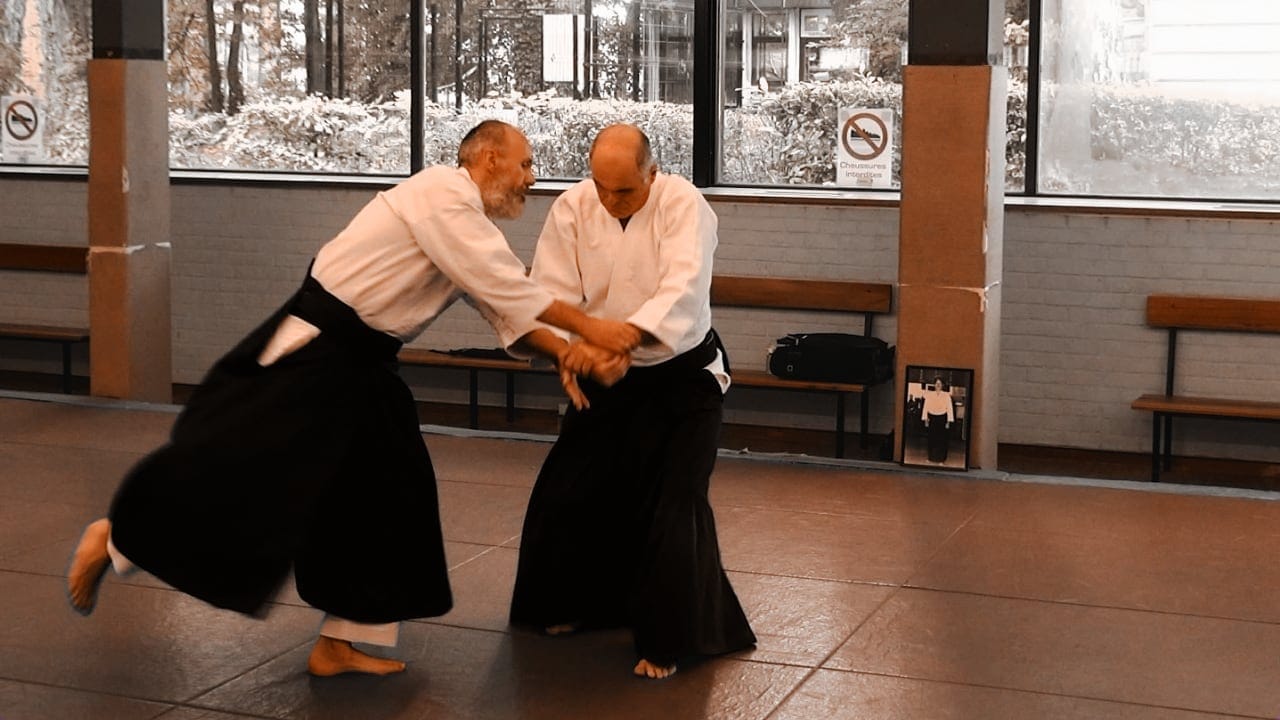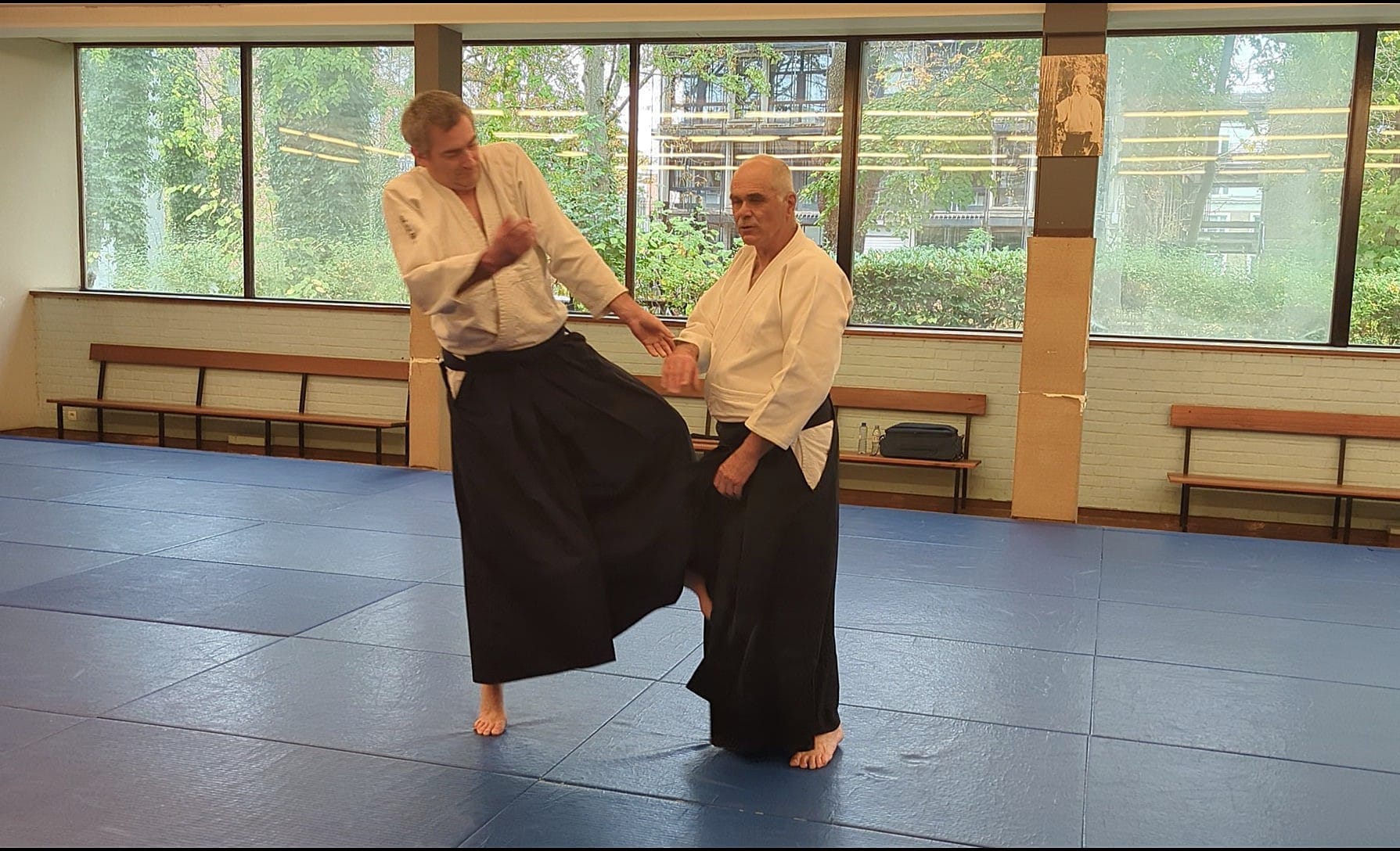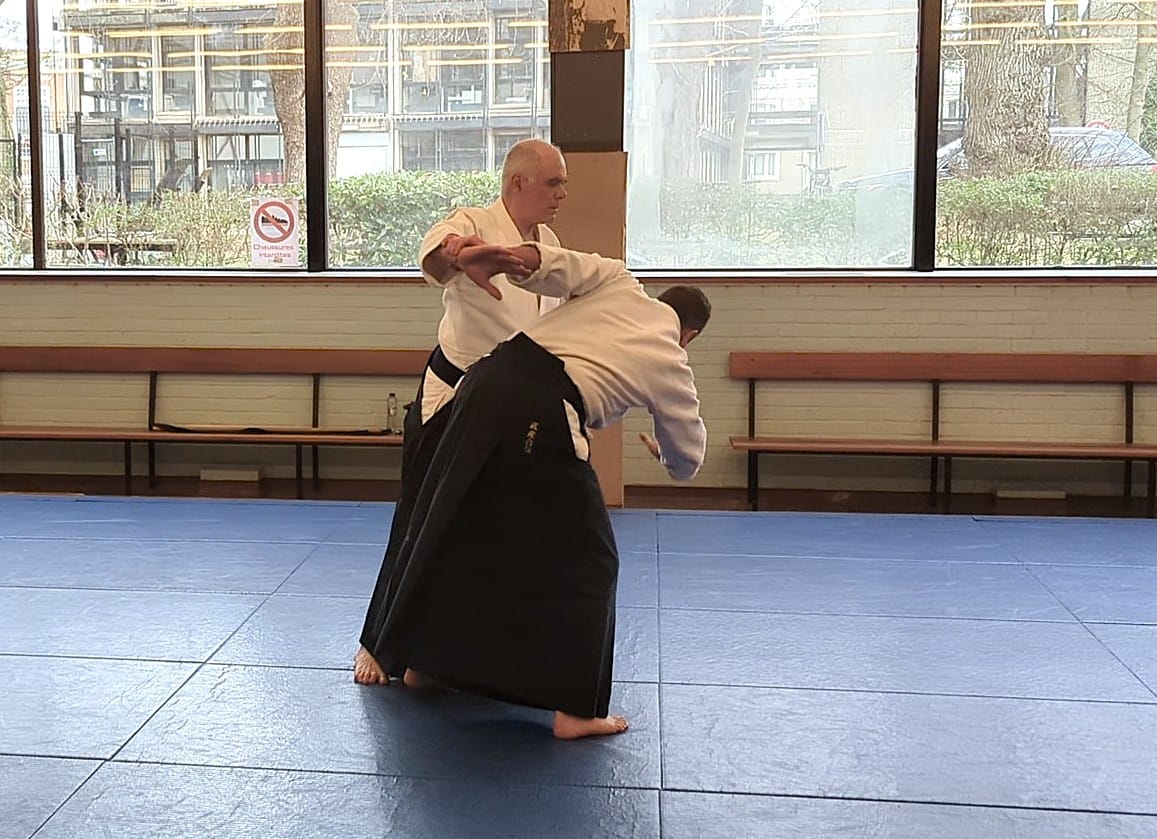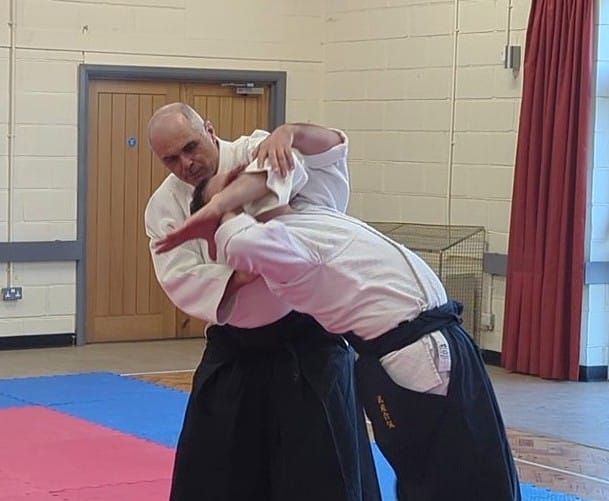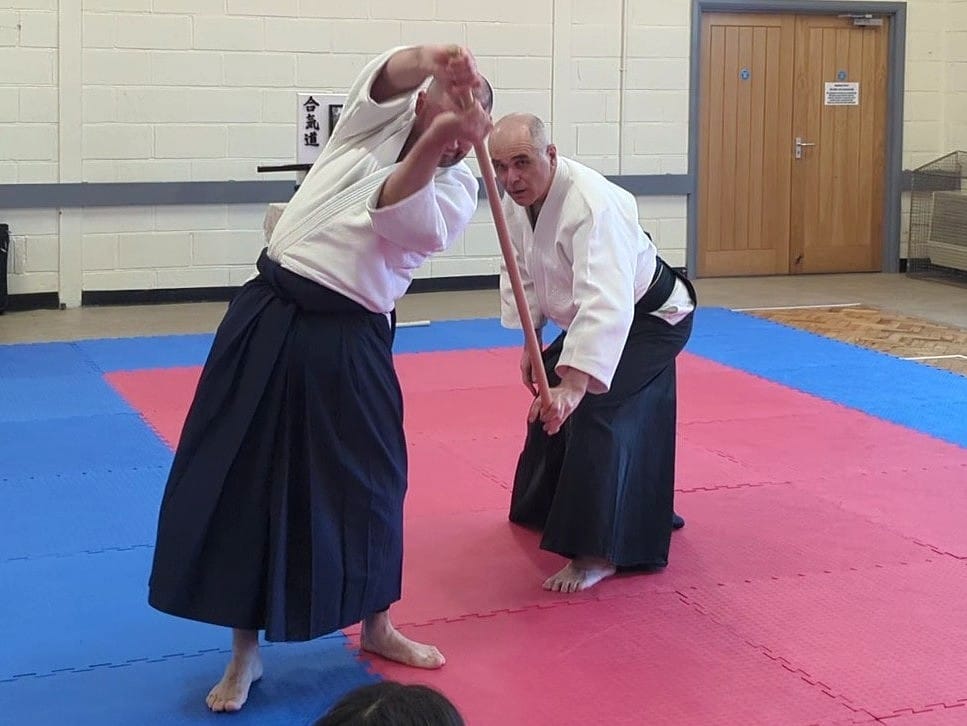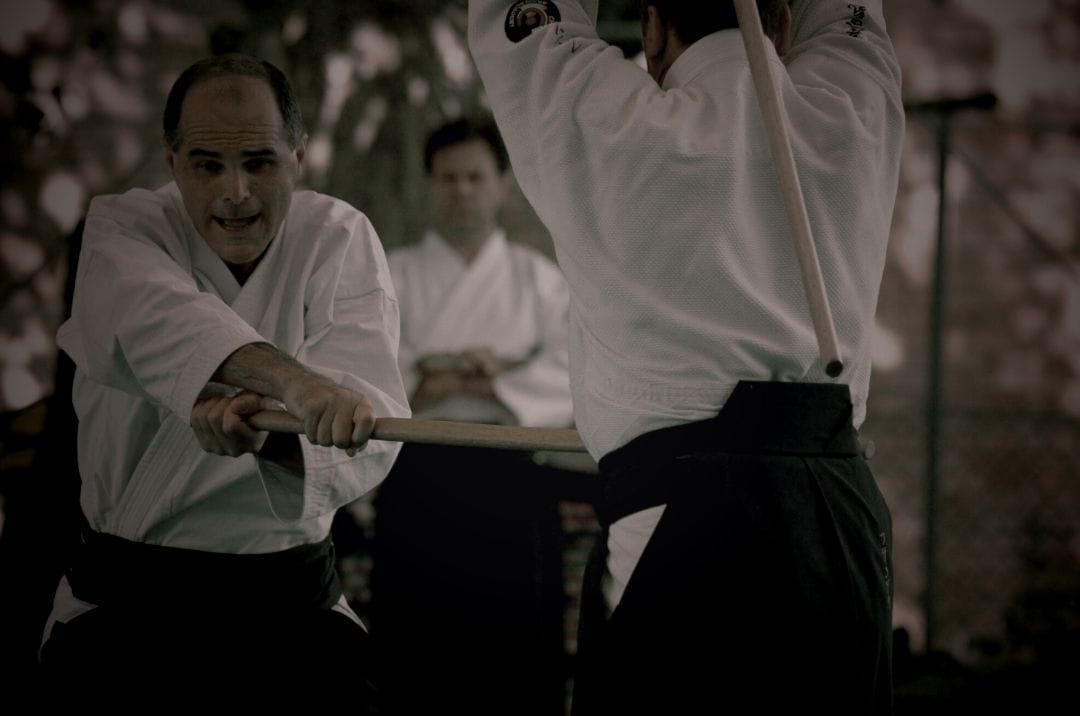In the Japanese word nagare, the idea is one of circulation, of flow.
The flow of a river is uninterrupted (except when the river has dried up, of course).
This continuity and fluidity are the elements that need to be studied in the ki no nagare of Aikido.
The search for ki no nagare should not be confused with the search for speed of execution, nor should it be confused with the search for power.
It is true, however, that a successful ki no nagare will bring in its wake the right power and the right speed of execution. You just have to be careful not to reverse the order of things.
One of the important functions of ki no nagare is to set uke in motion by creating his imbalance, as can be seen in the video:
The opposite of ki no nagare is kotai.
The first thing to acquire in Aikido - before mobility - is hip stability, and hip stability can only be obtained by static practice of the basic empty-hand techniques, as well as by training in suburi and tanren uchi. Kotai defines the modality of this practice, which is by definition non-dynamic.
In kotai, lies the idea of a stable power, that of the square, the immovable and unshakeable fortress behind its walls. It is only after the hips have been stabilised by the study of kotai that the study of ki no nagare can begin.
It is illusory to think that a man can acquire stability in his hips by starting Aikido with a dynamic practice of the techniques. Movement cannot compensate for the lack of stability that results from insufficient or non-existent training in kotai techniques. The roots of movement (kihon) are not learned through movement.
The fundamental error of the Aikikai, and of modern Aikido in its wake, has been to plunge the beginner into the world of ki no nagare from the outset, leaving him or her no choice but to find the hidden foundations of Aikido through movement alone. It's not absolutely impossible, but such an approach involves starting again from scratch on the path taken by the Founder, in other words, reinventing Aikido. I don't see many practitioners capable of this today, but I do see the errors of interpretation to which this pedagogical choice has led, and above all I don't see why we should pretend that O'Sensei never existed, by depriving ourselves of the precious help he bequeathed us.
To avoid any misunderstanding however, let's repeat that Aikido is all about movement, one could even say that Aikido has no meaning outside of movement. But here we are faced with a problem of learning; we have to take into account - in the teaching method - the fact that movement alone is not capable of building the stability of the body in movement. To sum up, if it is not prepared by kotai, ki no nagare is an empty shell, an aesthetic without truth, a decoy.

